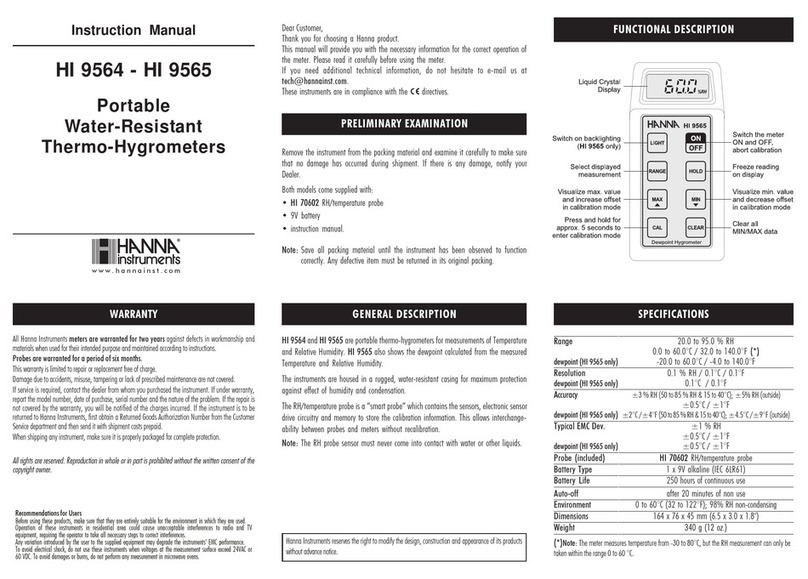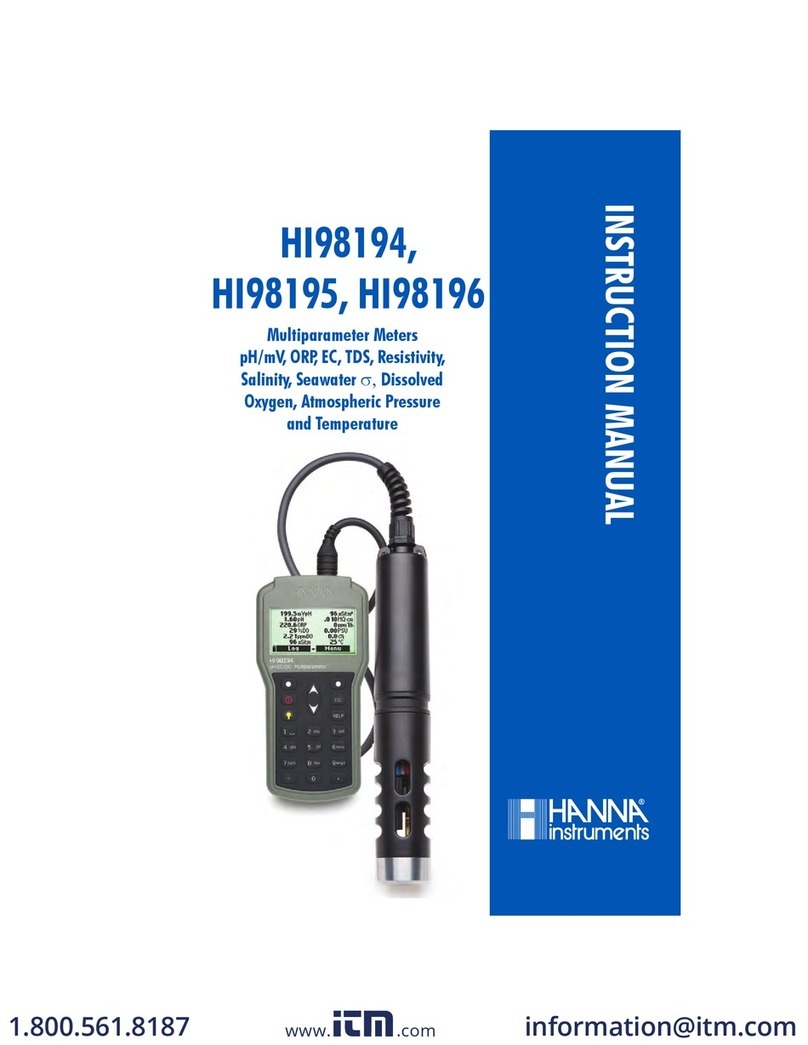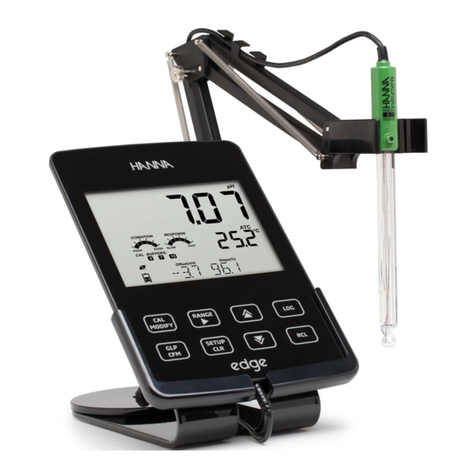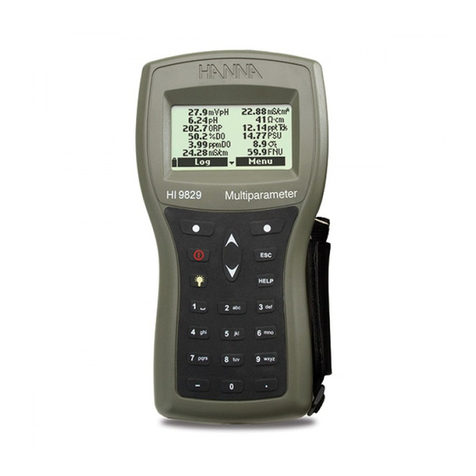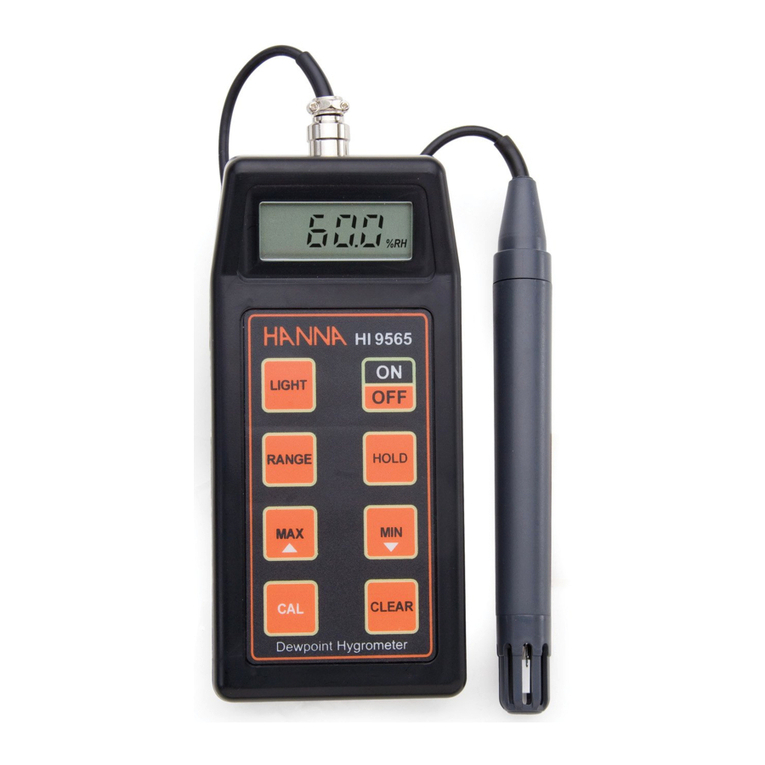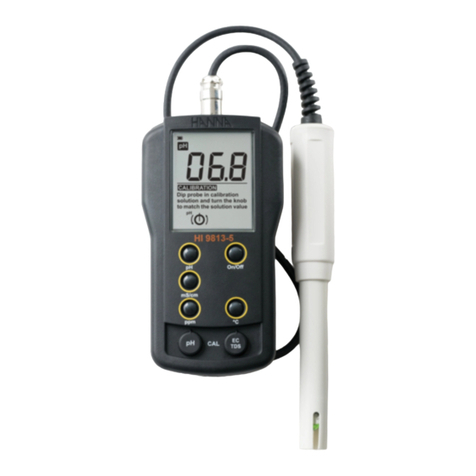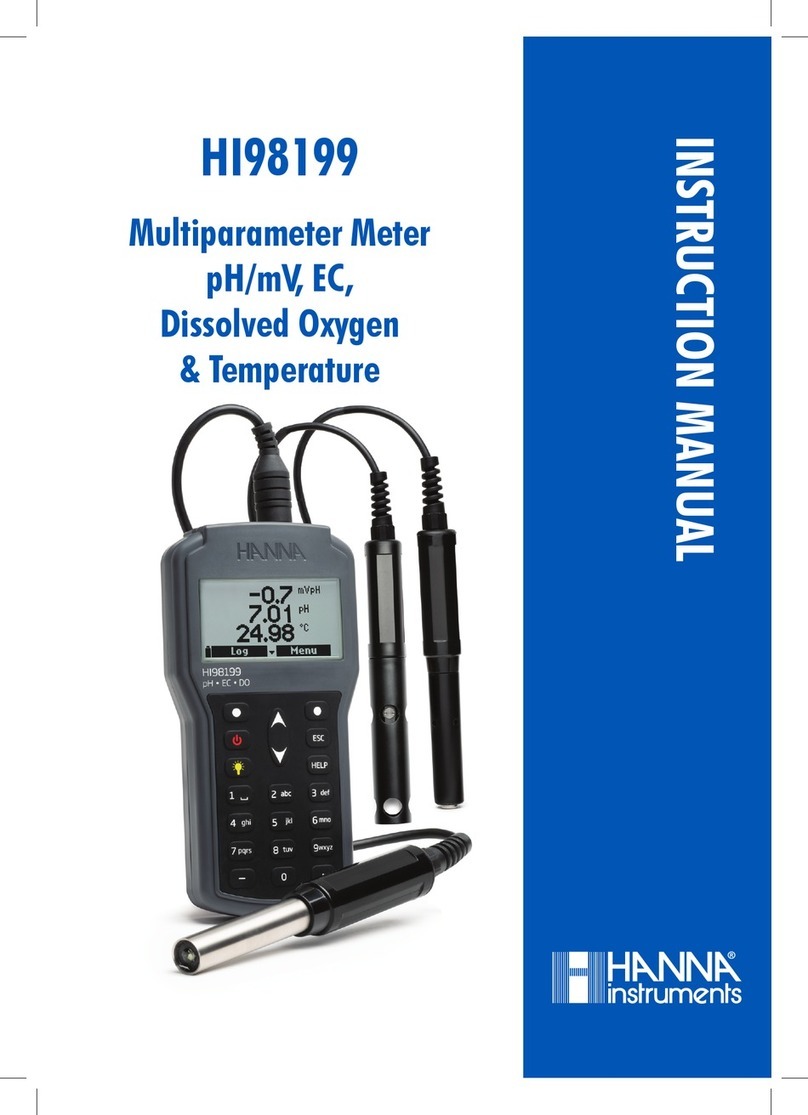5
4
8.1.9 Meter Password .................................................................................................... 46
8.1.10 Meter ID ............................................................................................................46
8.1.11 Language ...........................................................................................................47
8.1.12 Restore Factory Settings....................................................................................... 47
8.2 Probe Setup ................................................................................................. 47
8.2.1 Probe ID ..............................................................................................................47
CHAPTER 9 - STATUS .................................................................................... 48
9.1 Meter Status ................................................................................................. 48
9.2 Probe Status ................................................................................................ 48
9.3 GLP Data .................................................................................................... 49
CHAPTER 10 - LOGGING MODE ................................................................... 52
10.1 Logging Menu Structure ............................................................................... 53
10.2 Logging On Meter ...................................................................................... 53
10.2.1 One Sample On Meter ....................................................................................... 54
10.2.2 Continuous Meter Log ........................................................................................ 54
10.3 Log Recall ................................................................................................. 55
10.4 Log Notes .................................................................................................. 56
10.4.1 Remarks ............................................................................................................ 56
10.4.2 Delete All Remarks .............................................................................................. 56
CHAPTER 11 - PC CONNECTION .................................................................. 57
11.1 Software Installation .................................................................................... 57
11.2 Meter to PC Connection .............................................................................. 57
CHAPTER 12 - TROUBLESHOOTING / ERROR MESSAGES ............................... 59
APPENDIX
A - PROBE MAINTENANCE................................................................................ 61
B - PROBE DEPLOYMENT .................................................................................. 63
C - ACCESSORIES ............................................................................................. 65
D - WARRANTY ................................................................................................. 70
6.2.5 Resistivity Unit (HI 98194, HI 98195 only) .............................................................28
6.2.6 Seawater Sigma Unit (HI 98194, HI 98195 only) .................................................... 28
6.2.7 EC Resolution Unit (HI 98194, HI 98195 only) .......................................................28
6.2.8 Absolute EC Resolution Unit (HI 98194, HI 98195 only) ..........................................28
6.2.9 TDS Resolution Unit (HI 98194, HI 98195 only) ..................................................... 28
6.3 Parameter Coefficients ................................................................................... 29
6.3.1 EC Reference Temperature (HI 98194, HI 98195 only) ............................................29
6.3.2 EC Temperature Coefficient (HI 98194, HI 98195 only) ..........................................29
6.3.3 TDS Factor (HI 98194, HI 98195 only) ..................................................................29
6.4 Averaging ................................................................................................... 29
CHAPTER 7 - CALIBRATION MODE ................................................................ 30
7.1 Quick Calibration ........................................................................................ 31
7.2 pH Calibration ............................................................................................. 32
7.2.1 Preparation .......................................................................................................... 32
7.2.2 Procedure ............................................................................................................33
7.2.3 pH Calibration Error Messages .............................................................................. 34
7.3 Relative mV Calibration ................................................................................. 35
7.3.1 Preparation .......................................................................................................... 36
7.3.2 Procedure ............................................................................................................36
7.4 Dissolved Oxygen Calibration (HI 98194, HI 98196 only) .............................. 36
7.5 Conductivity Calibration (HI 98194, HI 98195 only) ...................................... 38
7.6 Temperature Calibration ................................................................................ 42
7.7 Atmospheric Pressure Calibration ................................................................... 43
CHAPTER 8 - SYSTEM SETUP ......................................................................... 44
8.1 Meter Setup ................................................................................................. 44
8.1.1 Time ...................................................................................................................44
8.1.2 Date ....................................................................................................................44
8.1.3 Auto Poweroff ......................................................................................................45
8.1.4 Key Beep ............................................................................................................. 45
8.1.5 Error Beep ........................................................................................................... 45
8.1.6 Decimal Separator ................................................................................................45
8.1.7 LCD Contrast .......................................................................................................45
8.1.8 LCD Backlight Intensity .......................................................................................... 46

